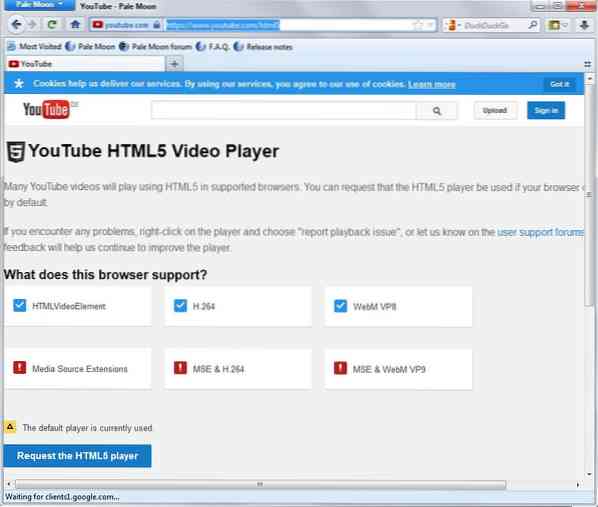The video hosting site YouTube supports Adobe Flash and HTML5 Video and delivers videos based on the web browser and system used to access the site.
Chrome users were defaulted to the HTML5 video player for some time now for instance while Firefox or Internet Explorer users to Adobe Flash instead for the most part.
YouTube announced yesterday that it made the decision to make HTML5 video the default on the website for all versions of Google Chrome, Internet Explorer 11, Safari 8 and Firefox Beta or newer.
No word on other browsers such as Pale Moon, Opera or the recently released Vivaldi browser. A quick check revealed that Vivaldi defaulted to HTML5 as well while Opera and Pale Moon to Adobe Flash.
You can check the default setting on your end by loading YouTube's HTML5 Video Player page.

Firefox Stable users are probably wondering why their browser is not included in the list of supported browsers. The core reason for it is that Media Source Extensions are not enabled yet in the web browser. While you can enable MSE in Firefox Stable, it won't change the fact that Flash is used by default.
You can however switch to the HTML5 video player on the linked page above so that it is used when available.
Some supported browsers, Internet Explorer 11 for example, show that the HTML5 player is not used by default as it is possible to request it on the HTML5 Video Player page on YouTube. If you do play videos on the site however HTML5 is used by default instead of Adobe Flash.
The switch to HTML5 should not come as a surprise to Internet users as Google has been a strong proponent of the technology.
According to the company, HTML5 video offers several benefits over proprietary plugins such as Flash or Silverlight. The company listed MediaSource Extensions and the new VP9 video codec as examples.
MediaSource Extensions is used to adjust the resolution and bitrate of videos in real-time. The technology reduced buffering by more than 50% globally according to Google.
The use of the VP9 video codec on the other hand reduced the average bandwidth requirement by 35% on the site which resulted in faster starts and bandwidth savings.
Depending on which browser and version is used, YouTube visitors may still switch between HTML5 and Flash as the primary player on the site.
In some browsers, that option has been removed completely which means that you are stuck with HTML5 and cannot switch back anymore on the site directly.
The only option here is to use a browser extension that changes the user agent of the web browser. Check out these guides that explain how to do so in Chrome and Firefox.
Now You: Do you prefer HTML5 video or Flash video?
 Phenquestions
Phenquestions


